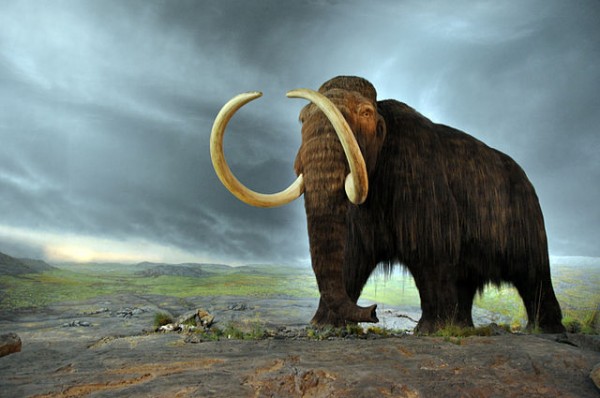By Ana Verayo, | March 05, 2017

About 10, 000 years ago, the wooly mammoths died out in Siberia and North America due to extensive human hunting and a warming world. (Flying Puffin/CC BY-SA 2.0)
Scientists have revealed how the great wooly mammoths went extinct as the last living population of these gigantic creatures apparently suffered from multiple genetic mutations. These mutations resulted in less thick, satin, soft coats, loss of sense of smell, and heartburn.
About 10, 000 years ago, the wooly mammoths died out in Siberia and North America due to extensive human hunting and a warming world. Despite changing climates and human activity, smaller populations survived on the islands in the Arctic Ocean in between Russian and Alaska. This was the last known mammoth population that ultimately disappeared some 3,700 years ago.
Like Us on Facebook
In this new study, scientists intensively analyzed the genomes of two types of ancient wooly mammoths, those who lived in the mainland regions and those who lived in the islands. According to the co-author of the study, Rebekah Rogers from the University of North Carolina, the island mammoth possessed multiple bad mutations before the last mammoths died out.
Rogers explained that apart from genetic mutations, many other factors involved why in the mammoths going extinct. "We do not know exactly what happened but having these bad genetic mutations did not help in their survival," she said.
Along with researchers from the University of California, Berkeley, Rogers compared the two genomes of these wooly mammoths. The mainland Siberian mammoth lived 45,000 years ago while the island mammoth lived 4,300 years ago on Wrangel Island in Russia, living in almost isolation with only 300 of the majestic animals.
Researchers revealed the dismal fate of the mammoths as the small island population accumulated a host of mutations that have become dangerous to their health, which was also caused by inbreeding. The Wrangel Island population had mutations that resulted in satin fur, similar to mice that appeared like a sleek, shiny coat with translucent hair, unlike the mainland Siberian wooly mammoths. This shiny coat is not very beneficial for these mammoths since stiff and thick outer coats that are bulky would have been protection against blizzards and the cold during the Ice Age.
Rogers noted that these "satin mutants" also possess digestive problems and heartburn, therefore, the island mammoths had a hard time digesting their food. They also had mutations when it comes to their olfactory system, resulting in a loss of their sense of smell.
Scientists suggest that these new findings of the wooly mammoths reveal a crucial understanding about the conservation of the species. Rogers explained that this population has been very small for a very long time and bringing them back to normal population levels does not mean it is okay. These populations need to be monitored to make sure they are healthy and that these bad mutations are not presently affecting them.
This new study was published in the journal Plos Genetics.
-
Use of Coronavirus Pandemic Drones Raises Privacy Concerns: Drones Spread Fear, Local Officials Say

-
Coronavirus Hampers The Delivery Of Lockheed Martin F-35 Stealth Fighters For 2020

-
Instagram Speeds Up Plans to Add Account Memorialization Feature Due to COVID-19 Deaths

-
NASA: Perseverance Plans to Bring 'Mars Rock' to Earth in 2031

-
600 Dead And 3,000 In The Hospital as Iranians Believed Drinking High-Concentrations of Alcohol Can Cure The Coronavirus

-
600 Dead And 3,000 In The Hospital as Iranians Believed Drinking High-Concentrations of Alcohol Can Cure The Coronavirus

-
COVID-19: Doctors, Nurses Use Virtual Reality to Learn New Skills in Treating Coronavirus Patients







